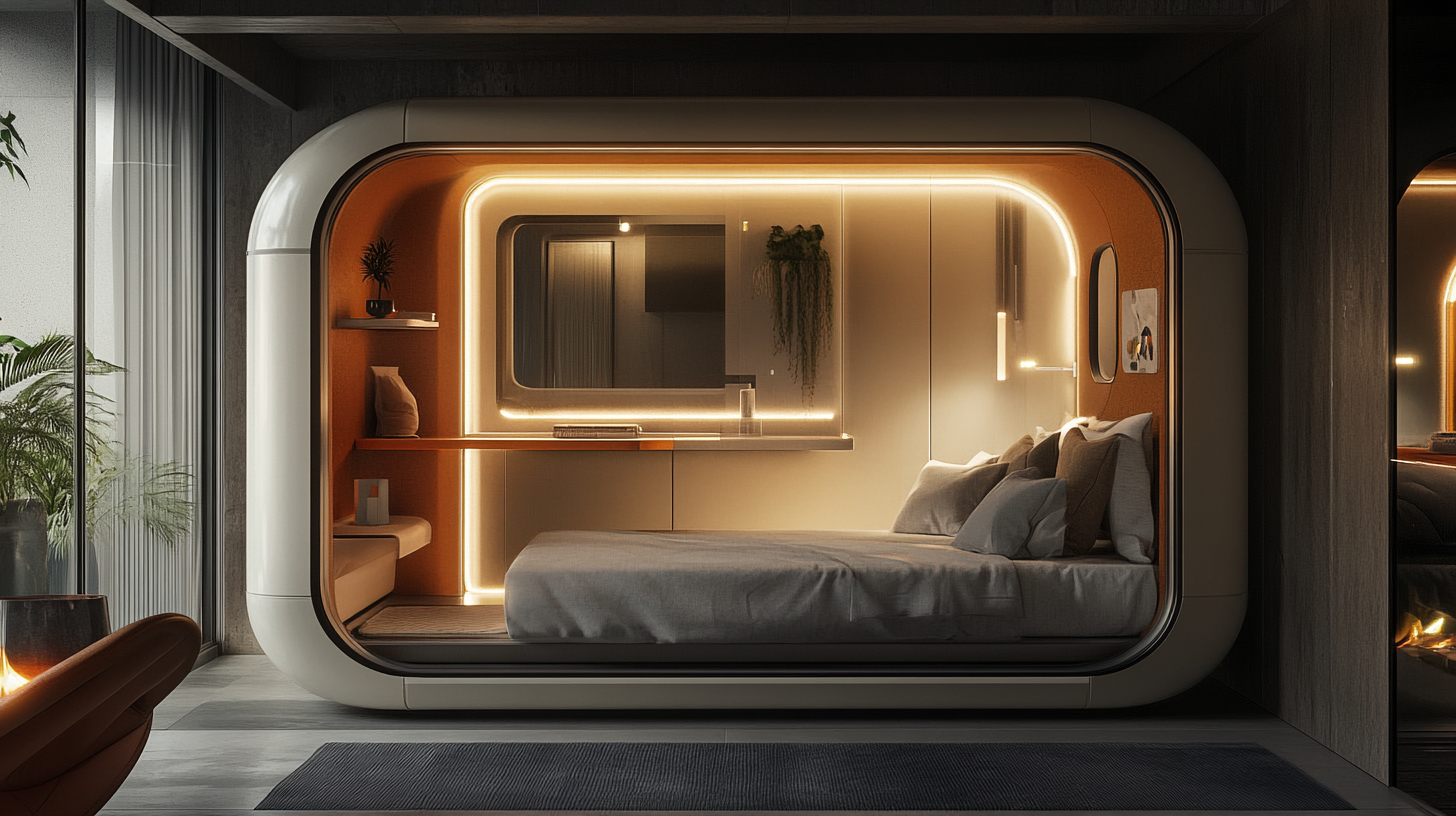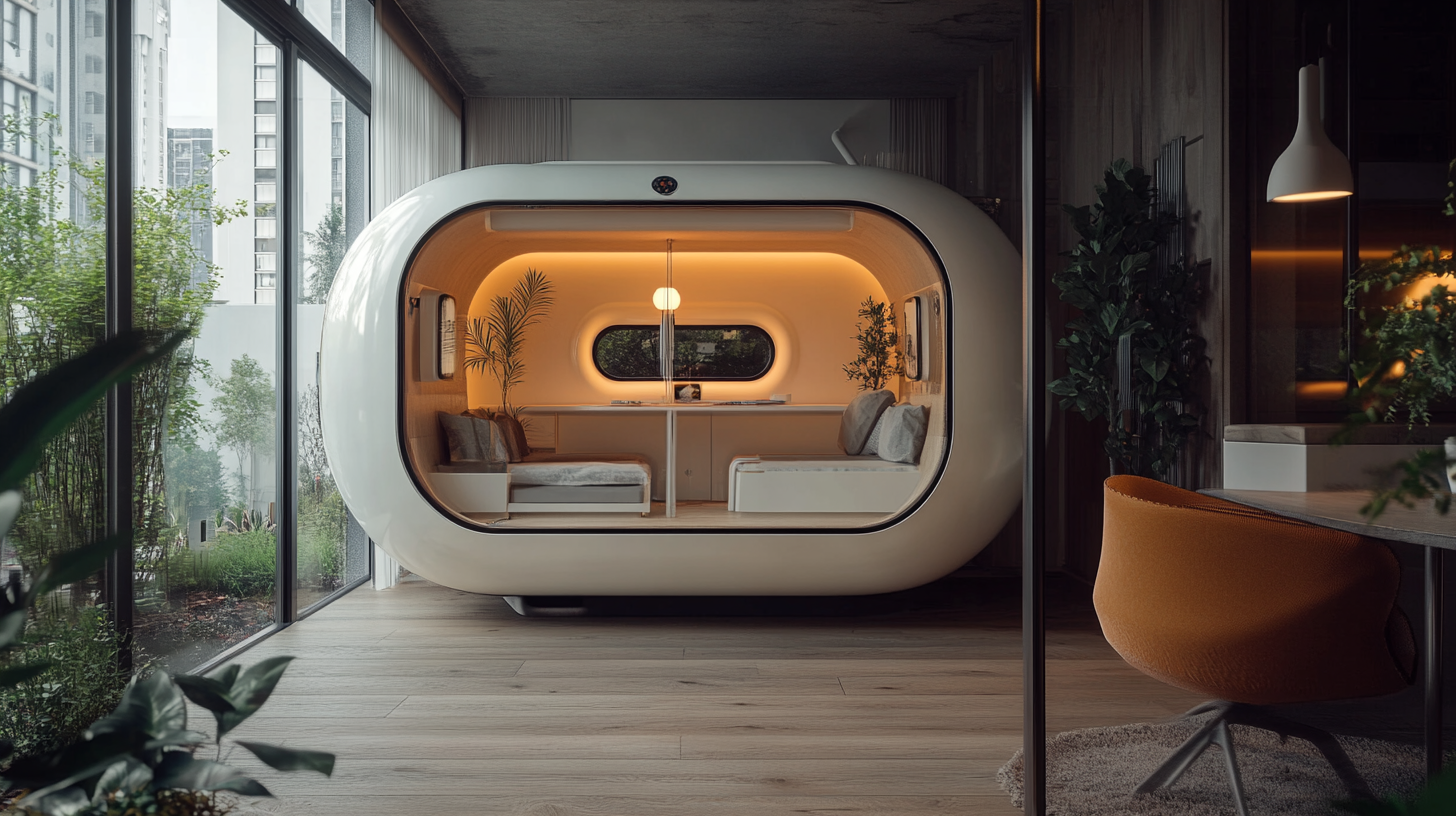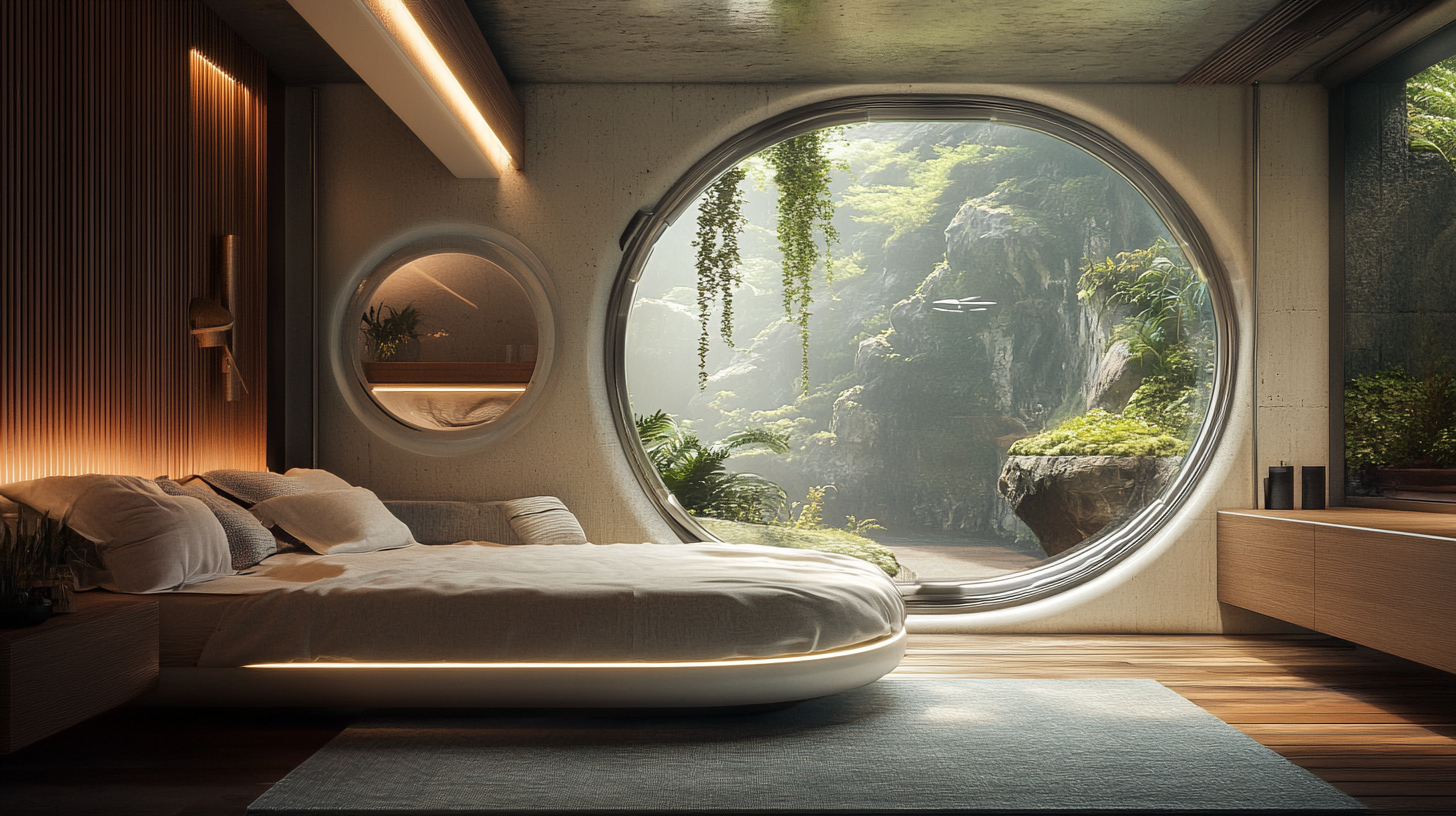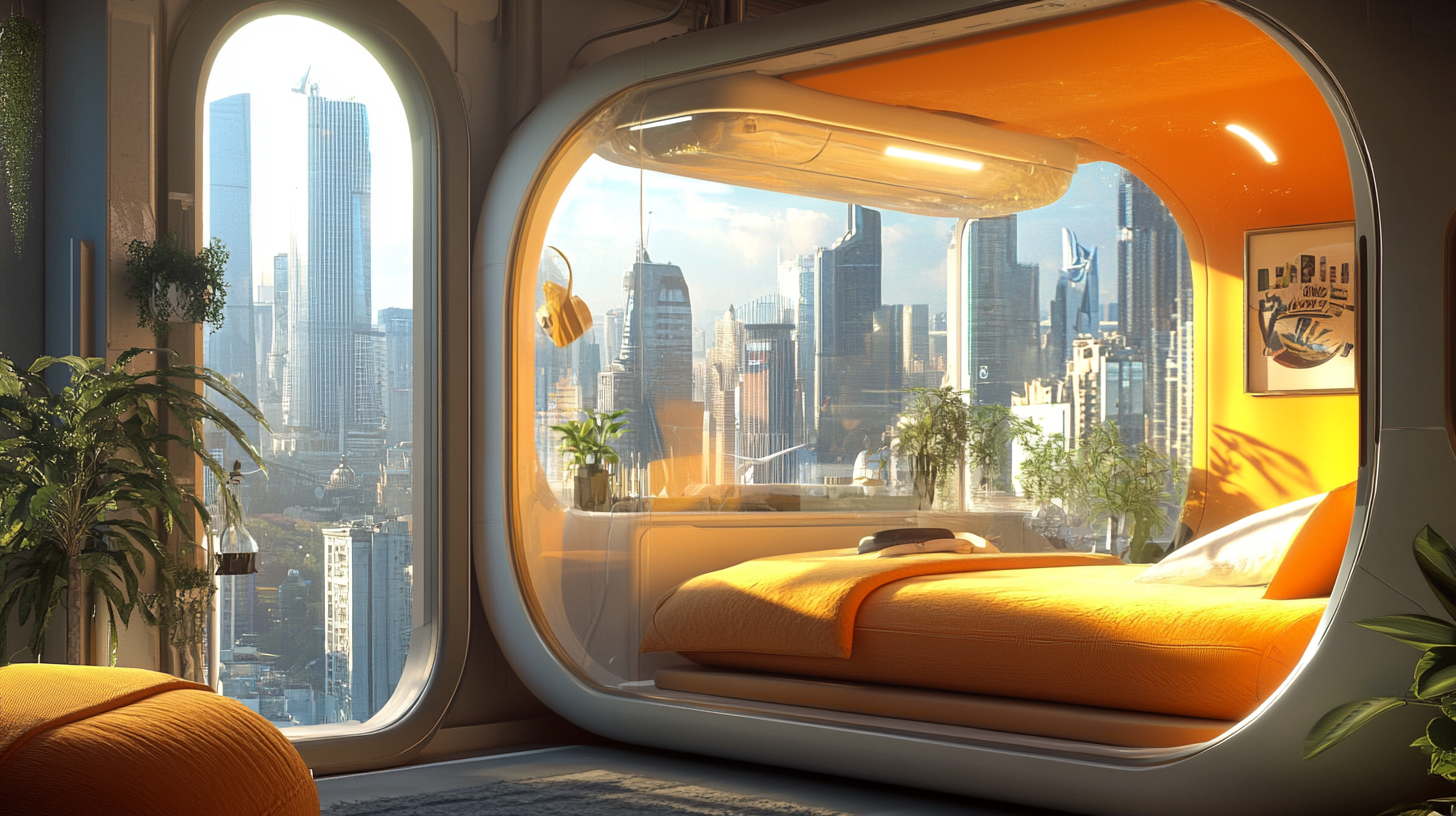
News
Exploring the Next Generation of Home Capsule Living Solutions
The concept of "Home Capsule" living solutions is rapidly gaining traction in today's urban landscapes, where space is a premium commodity. According to a report by the Urban Land Institute, as of 2023, over 55% of the world's population now resides in urban areas, with numbers expected to rise to 68% by 2050. This demographic shift underscores a growing demand for innovative housing solutions that prioritize both functionality and sustainability. Home Capsules offer a versatile approach to living, with modular designs that cater to modern lifestyles, including remote work and minimalistic living, making them an ideal choice for city dwellers seeking efficient use of their limited space.
Moreover, the global capsule hotel market, which has parallel similarities to Home Capsule concepts, was valued at approximately $1.5 billion in 2022 and is projected to reach $3.0 billion by 2030, exhibiting a CAGR of around 9.4% (Market Research Future). This rapid expansion signifies a shift in consumer preferences towards more affordable and compact living alternatives, where Home Capsules can meet the dual demands of mobility and comfort. In this blog, we will explore the next generation of Home Capsule living solutions, examining their design innovations, sustainability features, and the potential they hold for transforming the future of urban living.

The Concept of Capsule Living: A Modern Solution for Urban Spaces
The concept of capsule living has emerged as a revolutionary response to the growing challenges of urbanization. As cities continue to expand and housing becomes increasingly scarce, capsule living offers a compact yet functional solution for individuals seeking affordable accommodations without sacrificing comfort. These meticulously designed spaces focus on maximizing utility in minimal square footage, making them ideal for the modern urban dweller. Incorporating innovative design principles, capsule living environments often feature multi-functional furniture and smart storage solutions. This allows residents to enjoy a seamless blend of work, relaxation, and leisure within a constrained area. The aesthetic appeal of capsule homes is equally striking, with sleek lines and contemporary finishes that cater to a wide range of personal styles. Whether nestled in a bustling city center or a more tranquil neighborhood, these living spaces are designed to provide both convenience and a sense of community. Moreover, capsule living encourages a lifestyle that emphasizes simplicity and sustainability. With a smaller footprint, residents are less likely to accumulate excess belongings, fostering intentionality in their choices. Many capsule living solutions incorporate eco-friendly materials and energy-efficient technologies, appealing to environmentally conscious individuals. As urban spaces evolve, the rise of capsule living signifies a shift towards more adaptable and innovative housing solutions tailored to the needs of a modern population.

Design Innovations in Capsule Homes: Maximizing Functionality and Aesthetics
In recent years, the concept of capsule living has garnered significant attention as urbanization and housing shortages intensify. The essence of capsule homes is to create efficient, compact living spaces that cater to the needs of modern city dwellers. Design innovations in capsule homes focus on maximizing functionality while ensuring an aesthetic appeal that resonates with contemporary lifestyles.
One of the standout features of modern capsule homes is their modular design. This allows for flexible configurations that adapt to the occupant's lifestyle. For instance, multi-functional furniture pieces, such as a sofa that converts into a bed or a table that folds into the wall, optimize the use of limited space. Additionally, the integration of smart home technology has become a hallmark of capsule living, enabling residents to control their environment efficiently, from lighting to temperature, through their smartphones.
Aesthetically, capsule homes have evolved from basic and utilitarian to chic and inviting. The use of bold colors, innovative materials, and creative lighting solutions transforms these compact spaces into stylish retreats. Biophilic design elements, such as indoor plants and natural light optimization, enhance the livability of capsule homes, making them not only functional but also visually appealing. By prioritizing both functionality and aesthetics, the next generation of capsule living solutions meets the demands of urban life while creating an inspiring environment for its residents.

Sustainability in Capsule Living: Eco-Friendly Materials and Practices
As urban populations continue to swell, home capsule living solutions are emerging as a sustainable alternative for modern dwellers. These compact spaces prioritize functionality while addressing environmental concerns through their design and construction. One of the most significant aspects of this trend is the use of eco-friendly materials, which play a crucial role in reducing carbon footprints.
The adoption of reclaimed wood, bamboo, and recycled metals in capsule homes not only minimizes waste but also promotes a circular economy. These materials come with a smaller environmental impact as they require less energy to process and are often sourced locally, thus reducing transportation emissions. Additionally, many capsule living solutions incorporate sustainable insulation materials, such as sheep’s wool or recycled denim, ensuring energy efficiency and comfort year-round.
Beyond material choice, eco-friendly practices are integral to capsule living. Many designs feature solar panels, rainwater harvesting systems, and energy-efficient appliances, allowing residents to decrease their reliance on non-renewable resources. This holistic approach not only enhances the sustainability of the living space but also inspires individuals to lead an environmentally conscious lifestyle. By embracing these innovations, the next generation of home capsule living can serve as a model for thoughtful, sustainable living in our rapidly changing world.

Future Trends in Home Capsule Living: Smart Technology and Customization
As urban living spaces continue to shrink, the concept of home capsule living is gaining traction, especially with the integration of smart technology and customization options. According to a report by Grand View Research, the global smart home market is expected to reach $174 billion by 2025, with a significant portion attributed to space-efficient living solutions. This shift illustrates an increasing demand for homes that not only maximize limited space but also enhance the living experience through intelligent design.
One of the key trends in home capsule living is the implementation of IoT (Internet of Things) devices. These technologies allow residents to control their environment, from lighting and temperature to security and appliances, all through their smartphones. A survey by Statista found that 61% of U.S. households own at least one smart device, indicating a growing appetite for integrated living solutions. These advancements enable capsule homes to offer customizable settings that adapt to the preferences and routines of their owners, ensuring comfort and energy efficiency.
Customization is another critical aspect influencing the future of home capsule living. Modern modular designs allow for tailored solutions that reflect individual lifestyles and aesthetic preferences. The demand for such personalization is backed by a recent report from MarketsandMarkets, which estimates the custom home segment will grow by 8% annually through 2026. This trend not only caters to personal taste but also enhances the resale value of property by making small living spaces more attractive and functional.
In conclusion, the intersection of smart technology and customization in home capsule living is paving the way for innovative housing solutions that cater to the needs of urban dwellers. As these trends continue to evolve, the future of compact living looks promising, with an emphasis on both intelligence and personalization.
Challenges and Benefits of Adopting Capsule Living Solutions in Today’s Society
The rise of capsule living solutions presents a fascinating yet challenging paradigm in modern urban lifestyles. As cities become increasingly populated, and housing prices soar, more individuals are considering micro-living environments. According to a report by the Urban Land Institute, urban population density is expected to grow by over 60% by 2050, intensifying the demand for innovative living arrangements. Capsule living offers a space-efficient alternative, with units often showcasing a footprint of just 100-200 square feet, yet providing essential amenities for daily life.
However, embracing capsule living comes with its own set of challenges. One significant barrier is social acceptance; many people struggle with the idea of downsizing and sharing communal spaces. A survey by the National Multifamily Housing Council indicated that 44% of respondents are concerned about privacy in shared living situations, which could hinder widespread adoption of capsule living. Additionally, the design and functionality of these spaces must cater to diverse needs and preferences. A well-designed capsule, balancing aesthetics with utility, is essential for attracting potential residents.
Despite these challenges, the benefits of capsule living can be substantial. For instance, energy-efficient designs and shared resources can drastically reduce living costs and environmental impact. A report from the Global Ecological Footprint Network states that micro-living can help individuals cut down their carbon footprint by up to 30%. Moreover, living in close-knit communities fosters social interaction, a crucial factor for mental well-being as highlighted in studies by the American Psychological Association. As the landscape of urban living evolves, capsule solutions stand at the forefront, offering both opportunities and hurdles in their path.

